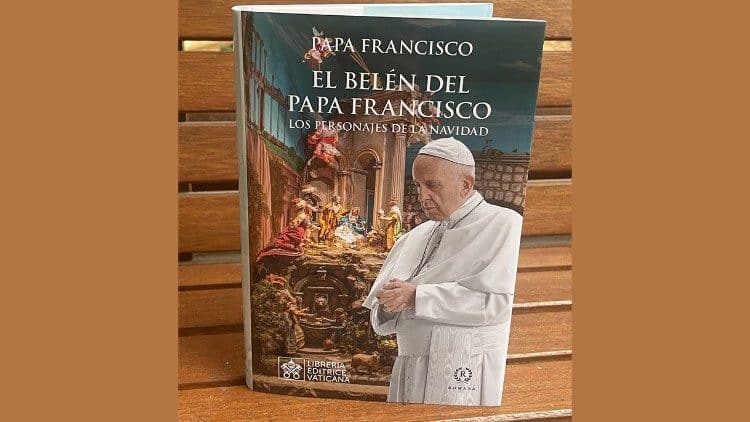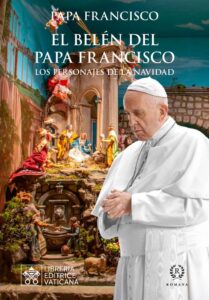Full text of the introduction, signed by the Pope:
“Twice I have wished to go and visit Greccio. The first time was to see the place where St Francis of Assisi invented the crib, something that also marked my childhood: in my parents’ house in Buenos Aires, this sign of Christmas was never missing, even before the tree.
The second time I gladly returned to that place, today in the province of Rieti, to sign the Apostolic Letter Admirabile signum on the meaning and significance of the crib today. On both occasions, I felt a special emotion emanating from the grotto where one can admire a medieval fresco depicting the night of Bethlehem and the night of Greccio, placed by the artist as if in parallel.
The emotion of this vision impels me to delve deeper into the Christian mystery that loves to hide in the infinitely small. Indeed, the incarnation of Jesus Christ remains at the heart of God’s revelation, even if it is easily forgotten that its unfolding is so discreet that it goes unnoticed.
Indeed, littleness is the way to find God. In an epitaph commemorating Saint Ignatius of Loyola we find written: “Non coerceri a maximo, sed contineri a minimo, divinum est”. It is divine to have ideals that are not limited by anything that exists, but ideals that are at the same time contained and lived in the smallest things of life. In short, we must not be afraid of the big things, we must move forward and be attentive to the smallest things.
For this reason, safeguarding the spirit of the crib becomes a healthy immersion in the presence of God that manifests itself in the small everyday things, sometimes banal and repetitive. Knowing how to renounce what seduces, but leads astray, in order to understand and choose God’s ways, is the task that awaits us. In this sense, discernment is a great gift, and we must never tired of asking for it in prayer. The shepherds in the manger are those who welcome God’s surprise and live their encounter with Him in wonder, adoring Him: in their littleness they recognise the face of God. Humanly speaking, we are all inclined to seek greatness, but it is a gift to know how to truly find it: to know how to find greatness in that littleness that God loves so much.
In January 2016, I met the young people of Rieti in the oasis of the Child Jesus, just above the sanctuary of the crib. I reminded them, and everyone today, that on Christmas night two signs guide us to recognise Jesus. One is the star-filled sky. There are many, infinite, such stars, but among them all there is one special star, the one that led the Magi to leave their homes and set out on a journey, a journey they did not know where it would lead them. It is the same in our lives: at a given moment, some special “star” invites us to make a decision, to make a choice, to embark on a journey. We must ask God with strength to show us that star that pushes us towards something more than our habits because that star will lead us to contemplate Jesus, that child who is born in Bethlehem and who wants our full happiness.
On that night, sanctified by the birth of the Saviour, we find another powerful sign: the littleness of God. The angels point out to the shepherds a child born in a manger. It is not a sign of power, self-sufficiency or pride. No. The eternal God is annihilated in a helpless, meek, and humble human being. God lowered Himself so that we could walk with Him and so that He could stand beside us, not above and away from us.
Awe and wonder are the two feelings that move everyone, young and old, before the crib, which is like a living Gospel that overflows from the pages of Sacred Scripture. It doesn’t matter how the crib is set up, it can be the same or change every year; what matters is that it speaks to life.
The first biographer of St. Francis, Thomas of Celano, describes the Christmas night of 1223, the eighth centenary of which we celebrate this year. When Francis arrived, he found the manger with the hay, the ox and the donkey. The people who had gathered there expressed untold joy, never before experienced, at the Christmas scene. The priest then solemnly celebrated the Eucharist in the manger, showing the link between the Incarnation of the Son of God and the Eucharist. On that occasion, there were no figurines in Greccio: the crib was made and lived by those present.
I am convinced that the first crib, which accomplished a great work of evangelisation, can also be an occasion for wonder and admiration today. Thus, what St Francis began with the simplicity of that sign persists to this day, as a genuine form of the beauty of our faith.
Vatican City, 27 September 2023″.











